Scribble Town (ST): Stories come alive in your imagination when you look at the paintings of Xavi Carbonell, an artist from Spain. Let’s meet Xavi and learn how he creates these beautiful story builders!
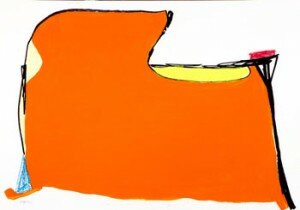
Untitled, 2012
Mixed media on paper
26 x 40 in (70 x 100 cm)
XC1361
Xavi Carbonell (XC): Hi my name is Xavi Carbonell, I am 42 years old, live in Alcoi, Spain with my wife and two daughters. I am a full time artist. have exhibited in various countries in Europe, Africa and the United States and my work is in many international collections. I am often described as an Abstract Expressionist, and infantile painter. Infantile is a genre not well known in the US, but it means my work reminds the viewer of a child’s work, but remember making something look simple is usually the most complicated task!
ST: Where are you and what are you up to these days?
XC: I am currently in New York City, painting and preparing for an art fair with my gallerist later this summer.
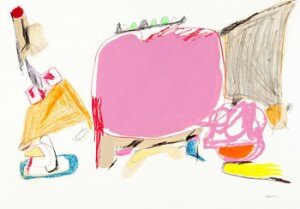
Untitled, 2012
Mixed media on paper
26 x 40 in (70 x 100 cm)
XC1404
ST: That’s exciting! Your days are spent with filling canvases with color. Sounds like a wonderful summer, but I’m sure it’s quite a lot of work too. When did you start painting?
XC: I started painting when I was 20 and was inspired after seeing works by the Spanish Artist, Antonio Saura in a museum exhibition. At that moment I realized I wanted to paint and create my own path.
ST: It’s pretty remarkable how those unforeseen moments in life realize the paths we take. Similar to you stumbling upon Antonio Saura, is there a way that you run into inspiration? Where do you find your spirit to create?
XC: I am most inspired to create in NYC, the city has such a powerful energy. The process of creativity is difficult to describe, but I find it’s often a result of new experiences, travel, meeting new people, but at the same time when I am in front of a blank canvas it just guides me.
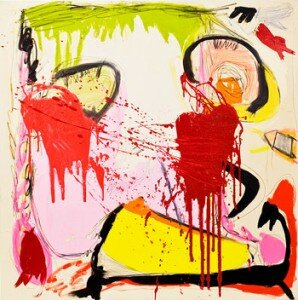
Untitled, 2013
Mixed media on canvas
48x 48 in (120 x 120 cm)
XC2403
ST: Since your paintings are so narrative for me- I start to hear a soundtrack that goes along with the picture. Do you ever listen to music when you paint?
XC: There was a period when I exclusively listened to classical music, then it was Jazz, and lately I don’t listen to much music while painting.
ST: Your paintings are so vibrant and strong from your choice of shapes and colors that I make up my own story when I see them. My imagination just takes off! Is there a story you are building in your head as you paint? Is that why you title your pieces Untitled- as to keep the mystery and openness available for all viewers?
XC: Yes, there’s a story in my head and that’s exactly why all my pieces are untitled. If I use a title, the viewer is pre-conditioned to see something. I prefer the viewer to create their own story, as I think that’s more fun and I want each person to see what they want to see in my work.
ST: It’d be interesting if you had a book next to your paintings and you could have the viewer write down the story that comes to mind when they see your paintings. You’ll get loads of different responses! That leads me to other mediums- what are some other forms of art you practice? Do you ever mix other mediums with your oil pastels?
XC: I have worked in the performance genre, and I love to cook which is a creative outlet. My concept of mixed media is based on oils but I also include, magic markers, chalk, colored pencils, oil sticks and charcoal.
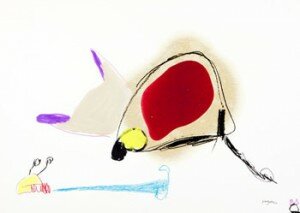
Untitled, 2012
Mixed media on paper
19.75 x 27.5 in (50 x 70 cm)
XC1441
ST: Painter Joel Garten mentioned to me that you had once said your work is influenced by childrens art. I am interested to know more about his comment.
XC: I am very inspired by the imagination of children and how they execute the concept on paper. I am always fascinated by how you can have a conversation with a child on paper with out actually using words. The innocence of children is the most exciting as adults unfortunately rarely preserve that quality. It’s something most of us sadly just lose along the way.
Kids, never lose your innocence. Adults, if you feel like you have lost it, try hard to find it in yourself as it’s the best part of each of us.
ST: With that said let’s try Xavi’s drawing exercise.
XC: One exercise is to draw with your eyes closed. For instance draw a landscape from memory, but remember to keep your eyes closed! You’ll be amazed with what you can create.
ST: Scribblers, send in your drawings to and we can post them on the Scribble Blog. Thanks Xavi for sharing so much with us! To see more of Xavi’s work you can go to http://www.artangler.com/Carbonell.html.
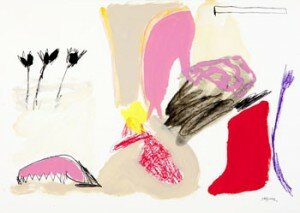
Untitled, 2012
Mixed media on paper
19.75 x 27.5 in (50 x 70 cm)
XC1463




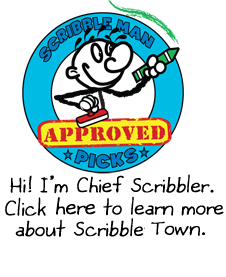
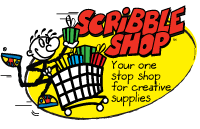






 To the Wonder (2012) –
To the Wonder (2012) – 


 Photo: “Fly Away Dandelions,”
Photo: “Fly Away Dandelions,”  Photo: “Light Blue Wishes,” SVPPLY
Photo: “Light Blue Wishes,” SVPPLY A Sunday Afternoon on the Island of La Grande Jatte (1884-86) by Georges Seurat
A Sunday Afternoon on the Island of La Grande Jatte (1884-86) by Georges Seurat The Papal Palace, Avignon (1900) by Paul Signac
The Papal Palace, Avignon (1900) by Paul Signac

 Photo:
Photo:  Photo:
Photo:  Photo:
Photo:  Photo: Casa Maria’s Creative Learning Zone
Photo: Casa Maria’s Creative Learning Zone Photo:
Photo:  Photo:
Photo: 